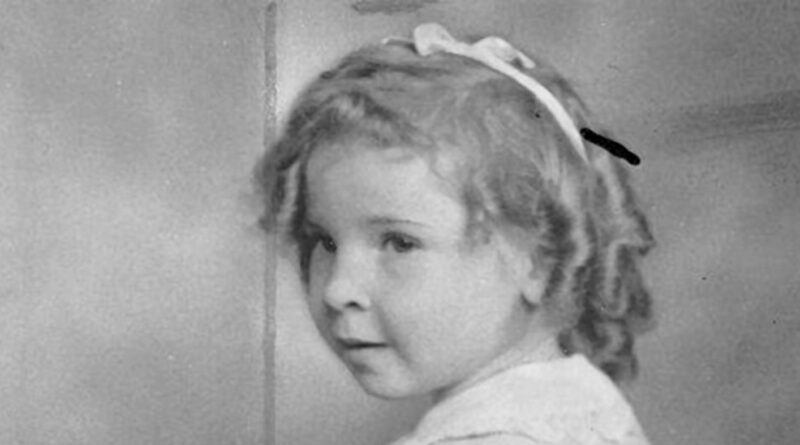Majorie West Never Seen Again After Spending a Day at Allegheny National Forest in McKean County Pennsylvania
On May 8, 1938, the West family left their home in Bradford, Pennsylvania, after church and drove south into the Allegheny National Forest in McKean County for a Mother’s Day picnic. The air held the cool sweetness of early spring, sunlight dappled through second growth trees, and the little clearing they favored looked inviting and safe. A blanket went down, baskets opened, and the children drifted at the edges of the scene where curiosity lives. Before the afternoon ended, 4 year old Marjorie West could not be found. The call of her name crossed the open ground and faded into the trees, and with that silence a quiet family outing turned into one of Pennsylvania’s most persistent mysteries.
The child at the center of the story
Marjorie was lively, inquisitive, and closely bonded to her older sister. Relatives remembered a blue dress suited to the mild day, a coat against the breeze, and a bright hat that should have been easy to spot against the tans and greens of the forest floor. She was not a chronic wanderer. She answered when called, and she kept a steady pattern of checking back with the adults. In the first hours of any missing child search, the habits of the child matter as much as the map. A child who loves pushing ahead on trails presents one set of probabilities. A child who stays within a small radius presents another. Everything known about Marjorie placed her in the second set, which made the sudden break in routine feel wrong from the start.
The place and how it hides as well as it reveals
The Allegheny National Forest in 1938 was a patchwork of young woodland, old skid roads, brushy swales, and open pockets left by earlier logging and small farms. The West family’s clearing sat near a rough track that locals used for weekend drives. Sightlines shifted with every step. Ten yards from the blanket a small child could vanish behind saplings and laurel. Twenty yards more, a hat might flash once between branches and then be gone as a child ducked under brush. Sound had its own tricks. Voices carried well across open ground, then fell flat in the trees, or slid along the shallow creek that curved below the site. The landscape offered a paradox that would haunt searchers. If a child simply strayed, methodical sweeping should find her. If some other force interrupted the day, the same folds of ground could conceal the truth with unnerving ease.
The last moments anyone could place with confidence
Late in the afternoon, as plates were stacked and bottles nested, Marjorie was near her sister. An adult attention turned to the blanket, to the careful tying of a cloth, to small tasks that mark the end of a picnic. When attention swung back, the smallest child was not where memory placed her. First calls searched the near trees. Second calls reached the slope. Then the practical work began. Family members moved in quick arcs, then wider loops along the track, then down to the creek bank and up again. Minutes stretched. The sun leaned toward the ridge. Worry hardened into fear.
The first hours and the building of a response
Before darkness fully settled, law enforcement had been notified. Other picnickers and motorists joined the search. Lanterns bobbed along the track as volunteers tried to hold spacing and direction. At first light, the Civilian Conservation Corps sent men from nearby camps, men who knew how to grid a hillside and keep a line straight in uneven ground. By the end of the second day hundreds had pushed brush with sticks, crawled under blowdowns, and waded the creek shoulder to shoulder. By the end of the first week, the total reached into the thousands. They found no shred of cloth, no hat, no shoe, no scuff that could be tied to Marjorie with confidence. The absence of even a small trace pressed hard against the simple idea of a child who wandered and lay down to rest.
Why a simple wandering does not fully explain the result
Several facts bothered the most experienced woodsmen. The search started quickly, not days later. The weather was fair for a child, and a child who had curled up under brush might have responded to voices within the first night. The creek behind the clearing was not a dangerous river. It was searched repeatedly by lines of men who felt for hollows with poles and careful feet. Predation severe enough to erase all trace in a few hours would likely have left something that hands and eyes would catch. Most of all, the grid work was dense and disciplined, repeated by people who knew how to read ground. If a simple wander into near woods had occurred, it should have yielded at least one small, telling sign. None appeared.
Early leads and the spectrum of explanations
As hours turned to days, reports arrived from towns across McKean County and from neighboring states. A driver described a crying child in a dark sedan on a road that crossed the state line that night. Others believed they recognized Marjorie from newspaper photographs in stations or squares. Investigators chased what they could, closed what they must, and set aside what could not be verified. Over time, two broad explanations remained in serious contention. The first proposed a sudden accident that carried the child into a concealed place that searchers missed, such as a sink in moss, a recess in a tangle of roots, or a hollow within windfall. The second proposed an abduction, either by a stranger passing through or by someone who had noticed the family earlier in the day and returned with intent. Each explanation carries friction. The first must answer the scale and skill of the search. The second must answer the remoteness of the site and the short window of opportunity.
Roads, timing, and how a removal could occur
The rough track near the clearing connected to better roads within minutes. From there a driver could reach Bradford, swing toward other McKean County towns, or cross a county or a state boundary before the first roadblocks could be imagined, much less set. In 1938, information moved by voice, by telephone chain, and by print. A driver who left the forest before dusk could travel without notice and be far away by the time the region fully understood what had happened. That reality gives the abduction theory a practical path, even as it does not lift it from possible to proven.
The human burden and the long tail of memory
The search did not simply end. It transformed into anniversaries, into careful walks by hunters each fall, and into family requests that kept a name in public view. Parents, siblings, cousins, neighbors, officers, and volunteers carried the weight differently, yet all carried it. Some avoided the road to the clearing for years. Others returned to the site with quiet determination, convinced that something small had been missed. The community learned the rhythm of remembrance, the patience of revisiting hard ground, and the discipline of repeating facts rather than rumors. That discipline matters, because rumor will crowd out truth if it is allowed to grow unchecked.
How investigators worked then and how work could continue now
Investigators in 1938 used the tools of their time. They mapped the area, organized foot searches, reinterviewed witnesses, and extended the net to boarding houses, taxi stands, and depots. Today, even without a recovered item, there is still work that can be done. Historical cartography and terrain modeling can reconstruct the 1938 sightlines and corridors more precisely than memory allows. Soil coring in locations of past suspicion can detect subtle disturbances that might have escaped notice. If any personal item surfaced and could be tied to the case, modern laboratories might extract information from tiny traces that a generation ago would have been considered useless. Structured archival research can also yield leads, from travel records to vehicle registrations to employment logs that show who had reason to drive those roads on that weekend.
What the case teaches about search and prevention
Professionals often point to the West case when they teach the importance of quick containment and disciplined grid work, and when they recommend that families increase vigilance at transition moments. Most disappearances that occur in wild places do not happen in the middle of an activity. They happen at the edges, when people are packing, loading, or moving from one place to another, and when attention scatters. The lesson is not fear. It is focus. Ten minutes of concentrated attention at the end of a picnic can be the difference between an ordinary day and a mystery with no easy ending.
Why the story endures
The disappearance of Marjorie West endures because it touches things people hold dear. It challenges the belief that children are safe within the orbit of family in a familiar place. It questions whether land yields every secret to honest effort. It shows how a community can mobilize in good faith and still come away without a single thread. The facts are spare, and that spareness is part of why the case survives in memory. A child was present. A child was gone. The land and the people could not explain the space between those points.
Paths that might still lead to clarity
Cold cases sometimes pivot on a voice. A person remembers a detail that did not feel important at the time. A person repeats a boast that someone once muttered in a moment of bravado. A person who stayed silent feels the years and decides that the balance of right has shifted. Other cases pivot on science. A fragment is found, a lab succeeds where older methods could not, and a map narrows. The West case could break either way. A single, well placed statement could give new shape to the field of possibilities. A single, lab confirmed item could collapse speculation into fact. When people keep a name present, they increase the chances that one of those hinges turns.
Closing reflection
On May 8, 1938, a family carried food and joy into a small clearing and expected to carry all of it back out again. They returned with less than they brought, and a silence moved with them that has never lifted. The record that remains is simple and heavy. A bright spring day. A child who does not wander far. A last moment near an older sister. An expanding search that finds nothing. Between those points lies a truth that belongs to the family, to the forest, and to the community that answered the call. Until that truth is found, the Allegheny National Forest will hold a small, unsettled quiet, and Marjorie West’s name will remain a gentle demand for answers.
Discover more from City Towner
Subscribe to get the latest posts sent to your email.




